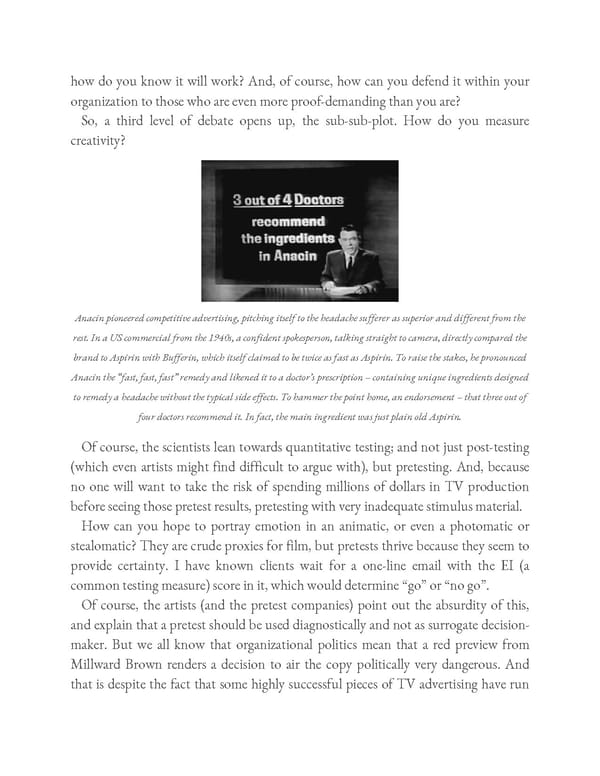how do you know it will work? And, of course, how can you defend it within your organization to those who are even more proof-demanding than you are? So, a third level of debate opens up, the sub-sub-plot. How do you measure creativity? Anacin pioneered competitive advertising, pitching itself to the headache sufferer as superior and different from the rest. In a US commercial from the 1940s, a confident spokesperson, talking straight to camera, directly compared the brand to Aspirin with Bufferin, which itself claimed to be twice as fast as Aspirin. To raise the stakes, he pronounced Anacin the “fast, fast, fast” remedy and likened it to a doctor’s prescription – containing unique ingredients designed to remedy a headache without the typical side effects. To hammer the point home, an endorsement – that three out of four doctors recommend it. In fact, the main ingredient was just plain old Aspirin. Of course, the scientists lean towards quantitative testing; and not just post-testing (which even artists might find difficult to argue with), but pretesting. And, because no one will want to take the risk of spending millions of dollars in TV production before seeing those pretest results, pretesting with very inadequate stimulus material. How can you hope to portray emotion in an animatic, or even a photomatic or stealomatic? They are crude proxies for film, but pretests thrive because they seem to provide certainty. I have known clients wait for a one-line email with the EI (a common testing measure) score in it, which would determine “go” or “no go”. Of course, the artists (and the pretest companies) point out the absurdity of this, and explain that a pretest should be used diagnostically and not as surrogate decision- maker. But we all know that organizational politics mean that a red preview from Millward Brown renders a decision to air the copy politically very dangerous. And that is despite the fact that some highly successful pieces of TV advertising have run
 Ogilvy on Advertising in the Digital Age Page 180 Page 182
Ogilvy on Advertising in the Digital Age Page 180 Page 182